Opinion & Analysis
Hunt: Breaking down the best players on tour by category
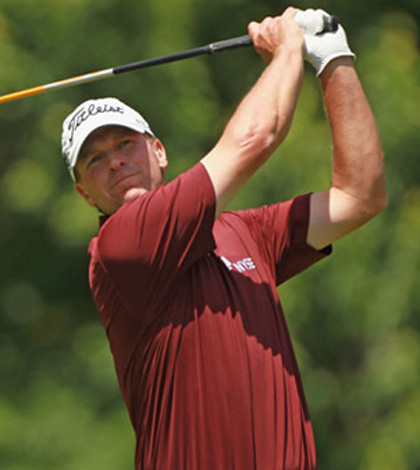
I’m often asked by my readers what current PGA Tour player’s game I would prefer to have based upon my statistical research. To answer their question, I decided to look at the data and split the game into certain key metrics and base it upon a Tour player’s history. Hopefully for those at home, this will get people pointed in the right direction as to which players to observe when it comes to certain categories of the game.
DRIVING THE BALL
Variables to consider:
- Driving distance.
- Fairway percentage.
- Average distance from the edge of the fairway.
- Percent of times in a fairway bunker.
- “Missed Fairway — Other.”
Based on those variables, I use an algorithm that determines how effectively a player drives the ball. I call it “driving effectiveness.”
I also consider how well a golfer drives the ball off the tee when he is not hitting his driver. Looking at ShotLink data, I can tell you that most golfers would be surprised how many Tour players struggle hitting a 3 wood off the tee. We also have to consider ball height as in general, as high ball hitters have statistically fitted into today’s modern courses. I believe this is because the modern TPC courses are filled with forced carries.
With that, I would pick Boo Weekley, who has finished in my top 10 in Driving Effectiveness in each of the last three seasons. He’s one of the best fairway wood players in the game as well. He hits it long, accurate and precise.
Honorable Mention: Keegan Bradley, Graeme McDowell, Hunter Mahan, Graham DeLaet
Top Newcomer: Jordan Spieth
BIRDIE ZONE PLAY (75 to 125 YARDS)
Birdie Zone play (along with the rest of the zones) is based on the player’s average proximity to the cup. What I have generally found is that the golfers who perform best from the Birdie Zone tend to have less forward shaft lean at impact. There are some players who are usually very good Birdie Zone players such as Sergio Garcia. This makes me believe that Birdie Zone play is more about controlling the shaft lean and that the players with less forward shaft lean tend to do the best job of controlling it.
There are quite a few players on Tour that consistently perform well in the Birdie Zone, but I would pick Steve Stricker above them all based on his performance over the years.
Honorable Mention: Brian Gay, Camilo Villegas, Charlie Wi, Luke Donald, Charl Schwartzel
Top Newcomer: Paul Haley II
SAFE ZONE PLAY (125 to 175 YARDS)
The Safe Zone consists of short and mid irons for Tour players. It is also the zone where the most frequent amount of approach shot happens.
There are generally three ways to become extremely good in the Safe Zone:
- Keep the drive in the fairway a high percentage of time (80-plus percent).
- Become an excellent player out of the rough.
- Be a superior irons player from this distance.
For this article, I’m more concerned with the golfer’s pure ability to hit shots from this distance instead of the golfer who consistently keeps his ball in the fairway and ends up having an easier approach shot into the green than the golfer who is hitting shots out of the rough.
Out of all of the players, I would give this to Bud Cauley, as he has been excellent the past two years from the Safe Zone, whether he is hitting it from the fairway or the rough.
Honorable Mention: Lee Westwood, Tim Clark, Luke Donald, Ken Duke, Rory Sabbatini
Top Newcomer: Jordan Spieth
DANGER ZONE PLAY (175 to 225 YARDS)
There is a misconception that long hitters or excellent drivers of the ball goes hand in hand with good Danger Zone play. The assumption is that a long hitter will be hitting shorter clubs into the hole, and therefore has an easier shot. While that is true, he still has to be able to hit the ball well even if he has a shorter club. And there are plenty of excellent drivers of the ball that cannot hit it from the Danger Zone (i.e. Blake Adams, John Rollins and Bill Haas). Conversely, there are excellent Danger Zones that are terrible drivers of the ball (Mickelson, Romero and Michael Thompson).
One way to “cheat the system” is for players to keep the ball in the fairway when they are in the Danger Zone. I recommend this for ALL golfers when they are facing a very long par 4. Focus on finding the fairway with your driver instead of trying to swing harder in hopes of gaining a few yards.
Like the Safe Zone, I’m more interested in a “pure Danger Zone player” than one who smartly finds the fairway here repeatedly. That’s why I take Robert Garrigus. Most of the longer hitters on Tour hit very few of their Danger Zone shots from the rough because they usually are rarely in the Danger Zone on long par 4’s. Instead, they are usually hitting these Danger Zone shots from the tee box on par 3’s.
Garrigus is one of the exceptions, and he does hit quite a few Danger Zone shots from the rough, which indicates he is fairly conservative off the tee. However, he’s continually one of the best on Tour from the Danger Zone and is ranked first, by a long shot, from the Danger Zone this season.
Honorable Mention: Jim Furyk, David Toms, Boo Weekley, Phil Mickelson, Tiger Woods
Top Newcomer: D.H. Lee
225 to 275 YARDS ZONE
This zone is what I call a “volatile” metric, meaning that players rarely perform well from here year after year. One year a player may be one of the best on Tour and then the next year they may be one of the worst. We start to see this distance favoring longer hitters a little more noticeably.
It’s hard to argue against Tiger, since no one has hit more clutch shots from this distance than he has over the years.
Honorable Mention: Gary Woodland, George McNeill, Boo Weekley, Scott Stallings, Michael Thompson
Top Newcomer: Morgan Hoffmann
SHOTS FROM THE ROUGH
Shots from the rough are a bit difficult to quantify because rough tends to get longer as the ball is hit farther away from the fairway. While the data suggests that shots from the rough favor players who generate more club head speed, there are plenty of players with less club head speeds that play well from the rough. But, the issue may be that those lower club head speed players are keeping the ball closer to the edge of the fairway and are hitting from shorter rough grass.
Typically, Sergio Garcia has been one of the very best players from the rough over the years. However, I would take Mickelson, who has been practically as good. And if there was ever a golfer I needed to hit an impossible shot from the rough, it would be Lefty.
Honorable Mention: Sergio Garcia, Chris Couch, Dustin Johnson, Jonathan Byrd, Ken Duke
Top Newcomer: Morgan Hoffmann
SHOTS FROM THE FAIRWAY
Shots from the fairway actually have a far greater correlation to a golfer’s success on Tour than shots from the rough. That’s because most of their approach shots come from the fairway or the tee box. Therefore, shots from the fairway do not favor any style of play other than quality ballstrikers.
For my money, I would take Steve Stricker in a Big Break style contest if every shot was from the short grass. Stricker also finished first in my Shots from the Fairway metric in 2012.
Honorable Mention: Jeff Maggert, Jim Furyk, Rory McIlroy, Webb Simpson, Tiger Woods
Top Newcomer: Brian Stuard
PLAYING IN WINDY CONDITIONS
I have been doing some preliminary research on playing into the wind. From what I have researched thus far, it tends to favor golfers whom have a downward attack angle with the driver and are very good from the Birdie Zone. My initial thoughts is that the downward attack angle keeps the ball low, which makes them more comfortable in the wind. I think the Birdie Zone play has to do with having more Birdie Zone shots on the par 5’s and thus, the better wedge players can convert birdies on those holes.
My initial research shows that the best player in windy conditions (13-plus mph winds) is Charl Schwartzel.
Honorable mention: Tiger Woods, Boo Weekley, Chris Stroud, John Merrick, Trevor Immelman
Top Newcomer: N/A
SHORT GAME PLAY (LESS THAN 20 YARDS)
Part of short game play is not only the golfer’s skill around the green, but where they leave their approach shots. It is impossible to decipher where exactly the approach shots are left. That would make a strong case for Mickelson. But, I will go with Chris Riley, who has consistently been a top-5 player in Short Game play for years.
Honorable Mention: Phil Mickelson, Brian Gay, Charlie Wi, Ian Poulter, Jerry Kelly
Top Newcomer: James Hahn
PUTTING
This is based off the metric “Putts Gained.” The research has shown that putts from 3 to 15 feet have the largest correlation to Putts Gained performance. This is in part because putts made from longer than 15 feet are a volatile metric. In fact, the average Tour player makes one birdie putt from longer than 25 feet every 98 holes they play. As I have discussed here before, going low on Tour is about getting the ball inside 15 feet to the hole for birdie on a consistent basis — it is not about making a lot of bombs.
There are a lot of terrific putters on Tour. But, the one player who has stood out has been Luke Donald. Donald ranked first in Putts Gained in 2010, 2011 and 2012. He “slipped” last year falling to third in the metric.
Honorable Mention: Greg Chalmers, Aaron Baddeley, Tiger Woods, Bryce Molder, Brian Gay
Top Newcomer: Russell Henley
- LIKE2
- LEGIT0
- WOW0
- LOL0
- IDHT0
- FLOP0
- OB0
- SHANK0
19th Hole
Vincenzi’s LIV Golf Singapore betting preview: Course specialist ready to thrive once again

After another strong showing in Australia, LIV Golf will head to Sentosa Golf Club in Singapore looking to build off of what was undoubtedly their best event to date.
Sentosa Golf Club sits on the southern tip of Singapore and is one of the most beautiful courses in the world. The course is more than just incredible scenically; it was also rated 55th in Golf Digest’s top-100 courses in 2022-2023 and has been consistently regarded as one of the best courses in Asia. Prior to being part of the LIV rotation, the course hosted the Singapore Open every year since 2005.
Sentosa Golf Club is a par 71 measuring 7,406 yards. The course will require precise ball striking and some length off the tee. It’s possible to go low due to the pristine conditions, but there are also plenty of hazards and difficult spots on the course that can bring double bogey into play in a hurry. The Bermudagrass greens are perfectly manicured, and the course has spent millions on the sub-air system to keep the greens rolling fast. I spoke to Asian Tour player, Travis Smyth, who described the greens as “the best [he’s] ever played.”
Davis Love III, who competed in a Singapore Open in 2019, also gushed over the condition of the golf course.
“I love the greens. They are fabulous,” the 21-time PGA Tour winner said.
Love III also spoke about other aspects of the golf course.
“The greens are great; the fairways are perfect. It is a wonderful course, and it’s tricky off the tee.”
“It’s a long golf course, and you get some long iron shots. It takes somebody hitting it great to hit every green even though they are big.”
As Love III said, the course can be difficult off the tee due to the length of the course and the trouble looming around every corner. It will take a terrific ball striking week to win at Sentosa Golf Club.
In his pre-tournament press conference last season, Phil Mickelson echoed many of the same sentiments.
“To play Sentosa effectively, you’re going to have a lot of shots from 160 to 210, a lot of full 6-, 7-, 8-iron shots, and you need to hit those really well and you need to drive the ball well.”
Golfers who excel from tee to green and can dial in their longer irons will have a massive advantage this week.
Stat Leaders at LIV Golf Adelaide:
Fairways Hit
1.) Louis Oosthuizen
2.) Anirban Lahiri
3.) Jon Rahm
4.) Brendan Steele
5.) Cameron Tringale
Greens in Regulation
1.) Brooks Koepka
2.) Brendan Steele
3.) Dean Burmester
4.) Cameron Tringale
5.) Anirban Lahiri
Birdies Made
1.) Brendan Steele
2.) Dean Burmester
3.) Thomas Pieters
4.) Patrick Reed
5.) Carlos Ortiz
LIV Golf Individual Standings:
1.) Joaquin Niemann
2.) Jon Rahm
3.) Dean Burmester
4.) Louis Oosthuizen
5.) Abraham Ancer
LIV Golf Team Standings:
1.) Crushers
2.) Legion XIII
3.) Torque
4.) Stinger GC
5.) Ripper GC
LIV Golf Singapore Picks
Sergio Garcia +3000 (DraftKings)
Sergio Garcia is no stranger to Sentosa Golf Club. The Spaniard won the Singapore Open in 2018 by five strokes and lost in a playoff at LIV Singapore last year to scorching hot Talor Gooch. Looking at the course setup, it’s no surprise that a player like Sergio has played incredible golf here. He’s long off the tee and is one of the better long iron players in the world when he’s in form. Garcia is also statistically a much better putter on Bermudagrass than he is on other putting surfaces. He’s putt extremely well on Sentosa’s incredibly pure green complexes.
This season, Garcia has two runner-up finishes, both of them being playoff losses. Both El Camaleon and Doral are courses he’s had success at in his career. The Spaniard is a player who plays well at his tracks, and Sentosa is one of them. I believe Sergio will get himself in the mix this week. Hopefully the third time is a charm in Singapore.
Paul Casey +3300 (FanDuel)
Paul Casey is in the midst of one of his best seasons in the five years or so. The results recently have been up and down, but he’s shown that when he’s on a golf course that suits his game, he’s amongst the contenders.
This season, Casey has finishes of T5 (LIV Las Vegas), T2 (LIV Hong Kong), and a 6th at the Singapore Classic on the DP World Tour. At his best, the Englishman is one of the best long iron players in the world, which makes him a strong fit for Sentosa. Despite being in poor form last season, he was able to fire a Sunday 63, which shows he can low here at the course.
It’s been three years since Casey has won a tournament (Omega Dubai Desert Classic in 2021), but he’s been one of the top players on LIV this season and I think he can get it done at some point this season.
Mito Pereira +5000 (Bet365)
Since Mito Pereira’s unfortunate demise at the 2022 PGA Championship, he’s been extremely inconsistent. However, over the past few months, the Chilean has played well on the International Series as well as his most recent LIV start. Mito finished 8th at LIV Adelaide, which was his best LIV finish this season.
Last year, Pereira finished 5th at LIV Singapore, shooting fantastic rounds of 67-66-66. It makes sense why Mito would like Sentosa, as preeminent ball strikers tend to rise to the challenge of the golf course. He’s a great long iron player who is long and straight off the tee.
Mito has some experience playing in Asia and is one of the most talented players on LIV who’s yet to get in the winner’s circle. I have questions about whether or not he can come through once in contention, but if he gets there, I’m happy to roll the dice.
Andy Ogletree +15000 (DraftKings)
Andy Ogletree is a player I expected to have a strong 2024 but struggled early in his first full season on LIV. After failing to crack the top-25 in any LIV event this year, the former U.S. Amateur champion finally figured things out, finished in a tie for 3rd at LIV Adelaide.
Ogletree should be incredible comfortable playing in Singapore. He won the International Series Qatar last year and finished T3 at the International Series Singapore. The 26-year-old was arguably the best player on the Asian Tour in 2023 and has been fantastic in the continent over the past 18 months.
If Ogletree has indeed found form, he looks to be an amazing value at triple-digit odds.
- LIKE3
- LEGIT3
- WOW1
- LOL2
- IDHT0
- FLOP2
- OB0
- SHANK0
Opinion & Analysis
Ryan: Lessons from the worst golf instructor in America

In Tampa, there is a golf course that boasts carts that do not work, a water range, and a group of players none of which have any chance to break 80. The course is overseen by a staff of crusty men who have succeeded at nothing in life but ending up at the worst-run course in America. However, this place is no failure. With several other local courses going out of business — and boasting outstanding greens — the place is booked full.
While I came for the great greens, I stayed to watch our resident instructor; a poor-tempered, method teacher who caters to the hopeless. At first, it was simply hilarious. However, after months of listening and watching, something clicked. I realized I had a front-row seat to the worst golf instructor in America.
Here are some of my key takeaways.
Method Teacher
It is widely accepted that there are three types of golf instructors: system teachers, non-system teachers, and method teachers. Method teachers prescribe the same antidote for each student based on a preamble which teachers can learn in a couple day certification.
Method teaching allows anyone to be certified. This process caters to the lowest caliber instructor, creating the illusion of competency. This empowers these underqualified instructors with the moniker of “certified” to prey on the innocent and uninformed.
The Cult of Stack and Jilt
The Stack and Tilt website proudly boasts, “A golfer swings his hands inward in the backswing as opposed to straight back to 1) create power, similar to a field goal kicker moving his leg in an arc and 2) to promote a swing that is in-to-out, which produces a draw (and eliminates a slice).”
Now, let me tell you something, there is this law of the universe which says “energy can either be created or destroyed,” so either these guys are defying physics or they have no idea what they are taking about. Further, the idea that the first move of the backswing determines impact is conjecture with a splash of utter fantasy.
These are the pontifications of a method — a set of prescriptions applied to everyone with the hope of some success through the placebo effect. It is one thing for a naive student to believe, for a golf instructor to drink and then dispel this Kool-Aid is malpractice.
Fooled by Randomness
In flipping a coin, or even a March Madness bet, there is a 50-50 chance of success. In golf, especially for new players, results are asymmetric. Simply put: Anything can happen. The problem is that when bad instructors work with high handicappers, each and every shot gets its own diagnosis and prescription. Soon the student is overwhelmed.
Now here’s the sinister thing: The overwhelming information is by design. In this case, the coach is not trying to make you better, they are trying to make you reliant on them for information. A quasi Stockholm syndrome of codependency.
Practice
One of the most important scientists of the 20th century was Ivan Pavlov. As you might recall, he found that animals, including humans, could be conditioned into biological responses. In golf, the idea of practice has made millions of hackers salivate that they are one lesson or practice session from “the secret.”
Sunk Cost
The idea for the worst golf instructor is to create control and dependency so that clients ignore the sunk cost of not getting better. Instead, they are held hostage by the idea that they are one lesson or tip away from unlocking their potential.
Cliches
Cliches have the effect of terminating thoughts. However, they are the weapon of choice for this instructor. Add some hyperbole and students actually get no information. As a result, these players couldn’t play golf. When they did, they had no real scheme. With no idea what they are doing, they would descend into a spiral of no idea what to do, bad results, lower confidence, and running back to the lesson tee from more cliches.
The fact is that poor instruction is about conditioning players to become reliant members of your cult. To take away autonomy. To use practice as a form of control. To sell more golf lessons not by making people better but through the guise that without the teacher, the student can never reach their full potential. All under the umbrella of being “certified” (in a 2-day course!) and a melee of cliches.
This of course is not just happening at my muni but is a systemic problem around the country and around the world, the consequences of which are giving people a great reason to stop playing golf. But hey, at least it’s selling a lot of golf balls…
- LIKE17
- LEGIT2
- WOW0
- LOL4
- IDHT1
- FLOP4
- OB1
- SHANK22
19th Hole
Vincenzi’s 2024 Zurich Classic of New Orleans betting preview

The PGA TOUR heads to New Orleans to play the 2023 Zurich Classic of New Orleans. In a welcome change from the usual stroke play, the Zurich Classic is a team event. On Thursday and Saturday, the teams play best ball, and on Friday and Sunday the teams play alternate shot.
TPC Louisiana is a par 72 that measures 7,425 yards. The course features some short par 4s and plenty of water and bunkers, which makes for a lot of exciting risk/reward scenarios for competitors. Pete Dye designed the course in 2004 specifically for the Zurich Classic, although the event didn’t make its debut until 2007 because of Hurricane Katrina.
Coming off of the Masters and a signature event in consecutive weeks, the field this week is a step down, and understandably so. Many of the world’s top players will be using this time to rest after a busy stretch.
However, there are some interesting teams this season with some stars making surprise appearances in the team event. Some notable teams include Patrick Cantlay and Xander Schauffele, Rory McIlroy and Shane Lowry, Collin Morikawa and Kurt Kitayama, Will Zalatoris and Sahith Theegala as well as a few Canadian teams, Nick Taylor and Adam Hadwin and Taylor Pendrith and Corey Conners.
Past Winners at TPC Louisiana
- 2023: Riley/Hardy (-30)
- 2022: Cantlay/Schauffele (-29)
- 2021: Leishman/Smith (-20)
- 2019: Palmer/Rahm (-26)
- 2018: Horschel/Piercy (-22)
- 2017: Blixt/Smith (-27)
2024 Zurich Classic of New Orleans Picks
Tom Hoge/Maverick McNealy +2500 (DraftKings)
Tom Hoge is coming off of a solid T18 finish at the RBC Heritage and finished T13 at last year’s Zurich Classic alongside Harris English.
This season, Hoge is having one of his best years on Tour in terms of Strokes Gained: Approach. In his last 24 rounds, the only player to top him on the category is Scottie Scheffler. Hoge has been solid on Pete Dye designs, ranking 28th in the field over his past 36 rounds.
McNealy is also having a solid season. He’s finished T6 at the Waste Management Phoenix Open and T9 at the PLAYERS Championship. He recently started working with world renowned swing coach, Butch Harmon, and its seemingly paid dividends in 2024.
Keith Mitchell/Joel Dahmen +4000 (DraftKings)
Keith Mitchell is having a fantastic season, finishing in the top-20 of five of his past seven starts on Tour. Most recently, Mitchell finished T14 at the Valero Texas Open and gained a whopping 6.0 strokes off the tee. He finished 6th at last year’s Zurich Classic.
Joel Dahmen is having a resurgent year and has been dialed in with his irons. He also has a T11 finish at the PLAYERS Championship at TPC Sawgrass which is another Pete Dye track. With Mitchell’s length and Dahmen’s ability to put it close with his short irons, the Mitchell/Dahmen combination will be dangerous this week.
Taylor Moore/Matt NeSmith +6500 (DraftKings)
Taylor Moore has quickly developed into one of the more consistent players on Tour. He’s finished in the top-20 in three of his past four starts, including a very impressive showing at The Masters, finishing T20. He’s also finished T4 at this event in consecutive seasons alongside Matt NeSmith.
NeSmith isn’t having a great 2024, but has seemed to elevate his game in this format. He finished T26 at Pete Dye’s TPC Sawgrass, which gives the 30-year-old something to build off of. NeSmith is also a great putter on Bermudagrass, which could help elevate Moore’s ball striking prowess.
- LIKE8
- LEGIT3
- WOW1
- LOL1
- IDHT0
- FLOP3
- OB1
- SHANK2
-

 19th Hole2 weeks ago
19th Hole2 weeks agoJustin Thomas on the equipment choice of Scottie Scheffler that he thinks is ‘weird’
-

 19th Hole2 weeks ago
19th Hole2 weeks ago‘Absolutely crazy’ – Major champ lays into Patrick Cantlay over his decision on final hole of RBC Heritage
-

 19th Hole3 weeks ago
19th Hole3 weeks agoTwo star names reportedly blanked Jon Rahm all week at the Masters
-

 19th Hole3 weeks ago
19th Hole3 weeks agoReport: LIV Golf identifies latest star name they hope to sign to breakaway tour
-

 19th Hole3 weeks ago
19th Hole3 weeks agoNeal Shipley presser ends in awkward fashion after reporter claims Tiger handed him note on 8th fairway
-

 19th Hole2 weeks ago
19th Hole2 weeks agoBrandel Chamblee has ‘no doubt’ who started the McIlroy/LIV rumor and why
-

 19th Hole1 week ago
19th Hole1 week agoLET pro gives detailed financial breakdown of first week on tour…and the net result may shock you
-

 Equipment3 weeks ago
Equipment3 weeks agoJason Day on his recent switch into Srixon ZX5 and ZX7 Mk II irons

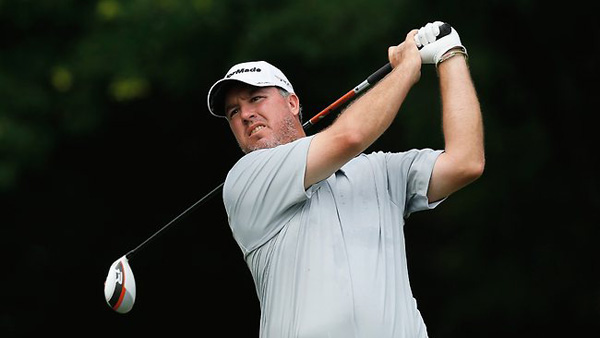
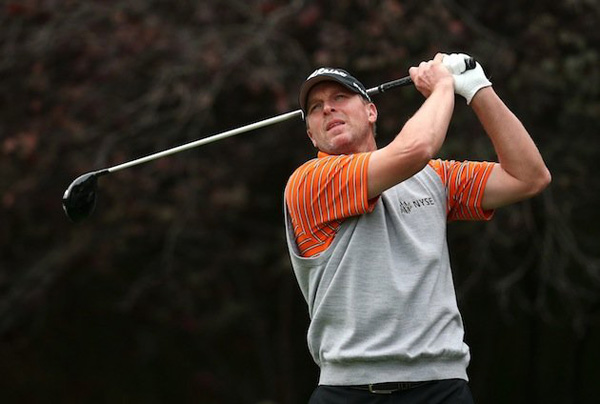
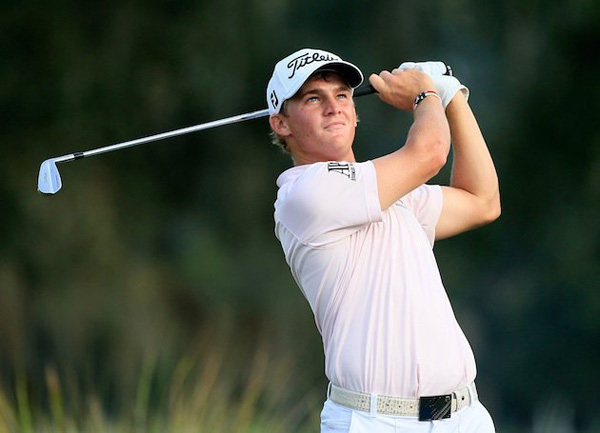
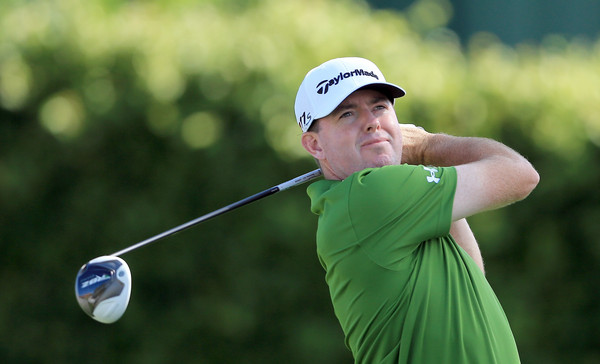
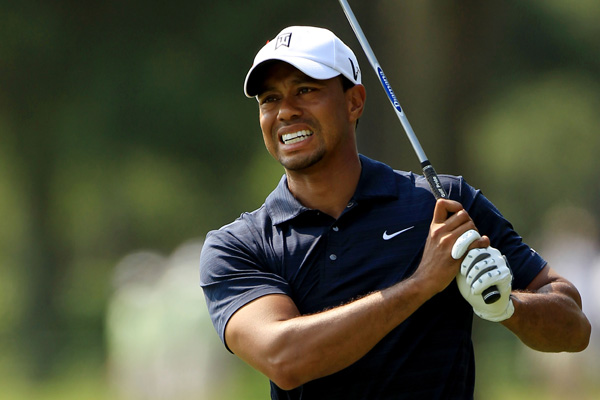

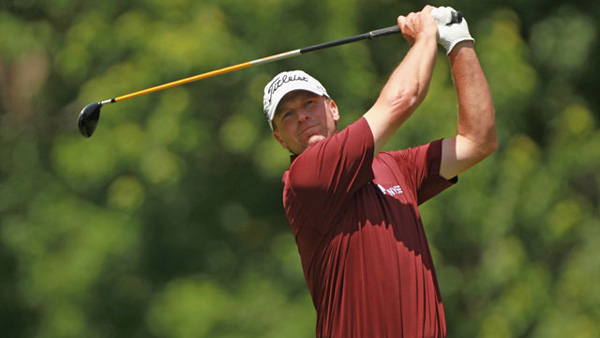
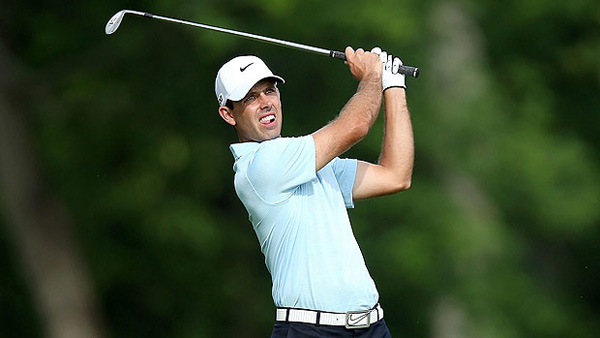
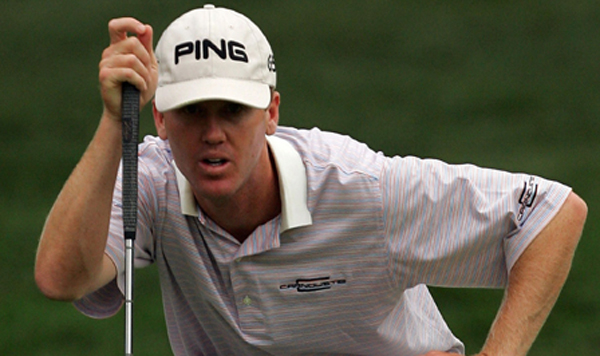
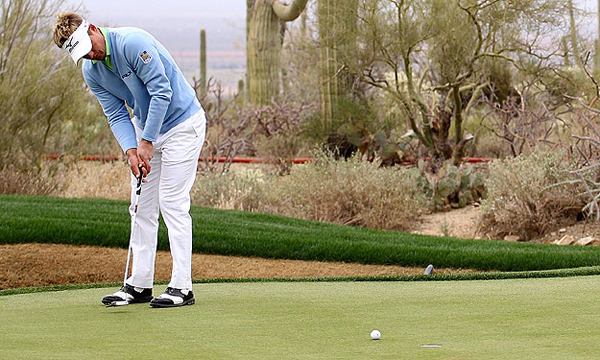


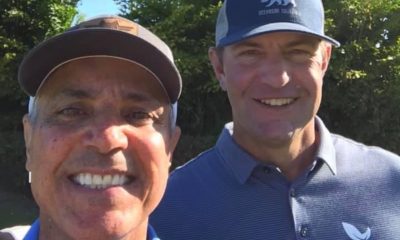









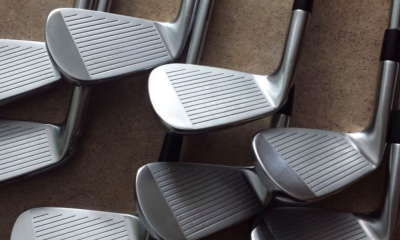
















B MAC
Jul 13, 2013 at 3:36 am
Putting brandt snedeker ??
Richie Hunt
Jul 22, 2013 at 10:37 am
I agree. He’s one of the best on Tour. I would still take Luke Donald over him because that’s how incredible of a putter Luke Donald is.
wayne defrancesco
Jul 10, 2013 at 9:38 pm
You mention that from 75 to 125 yards players with less forward shaft lean tend to be better. Less than what? Poor players tend to have none, and so I end up teaching them to get as much as possible. What are the extremes? What is too much and what is optimum? What is the average for all players and what is Stricker’s average? What do you suggest as a goal? Is it different for different types of grass? Do it change for uneven lies?
As you can see, there are a lot of interesting questions when it comes to forward shaft lean. Rather than saying “less is better” it might be more instructive to be more detailed.
John
Jul 13, 2013 at 9:09 pm
I think he’s refereeing to your typical good ballstriker, people who can get around a course wit short g
Ame dictating score, not your average bloke who’s struggling to hit a 9 iron onto a green.
Richie Hunt
Jul 22, 2013 at 10:35 am
Wayne,
I try to stay away from actual instruction when doing these columns. I feel that is something best left to the professionals like yourself.
My comment was in regards to Tour players. The better Birdie Zone players tend to have less forward shaft lean at impact compared to the Tour as a whole. There are some players like Sergio that do quite well from this distance. However, Sergio has shown a lack of consistency from this distance over the years. Some year’s he’s great, other years he’s poor.
From the BZ for Tour players, it’s really all about distance control. When Tour players hits shots from longer distances, we start to see golfers with more forward shaft lean at impact doing better in these categories.
That’s why I tend to believe that BZ play is really about controlling the lean and there appears to be a correlation between players with less shaft lean on Tour and their ability to control that lean.
Obviously, your 20 handicap can likely use more forward shaft lean in general. But, if you have a 5 handicap that has major distance control issues with a wedge in their hand, they may want to develop a wedge swing where they have less forward shaft lean to help remedy that issue.
Tom Miller
Jul 9, 2013 at 10:53 pm
Next year you should add bunker shots / sand saves.
Richie Hunt
Jul 10, 2013 at 8:59 am
Thanks guys.
Tom – I wanted to do bunker shots, but the Tour’s recording of bunker shots is too vague for my tastes. I don’t like Sand Save % as a metric because it doesn’t really tell us if the golfer is a good bunker player or if they are a good putter.
They do have proximity to the cup from the sand, but it is for ALL greenside bunker shots. The problem is that the distances on those bunker shots can vary. So a golfer who is hitting it closer may be doing so because they have a shorter shot to begin with.
I have followed 20 different players for a project I’m doing throughout the year on Shot Tracker. From the limited data I have, I believe that Jason Day is the best bunker player on Tour.
paul
Jul 9, 2013 at 9:32 pm
I love golf stats and read all articles about them. keep it up!